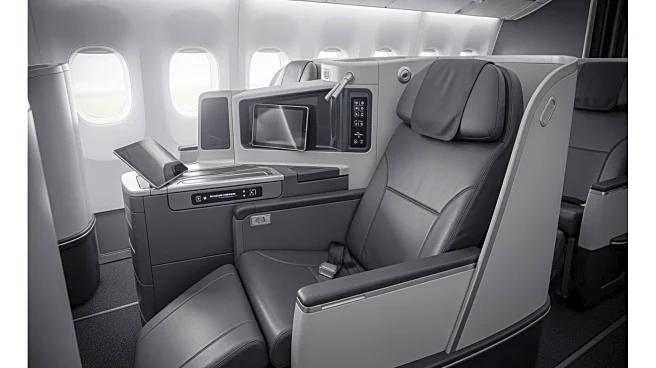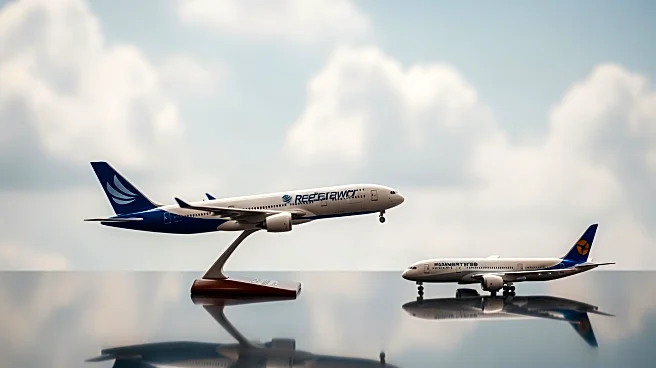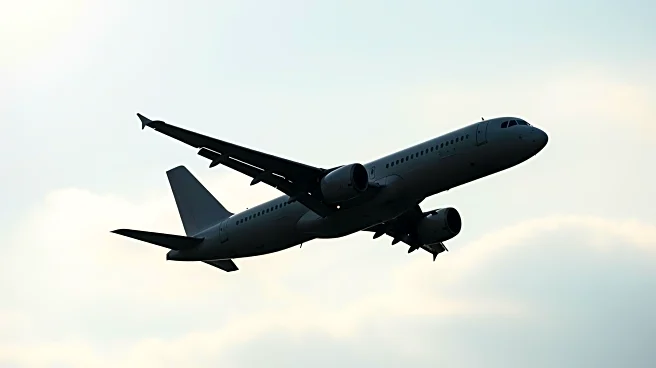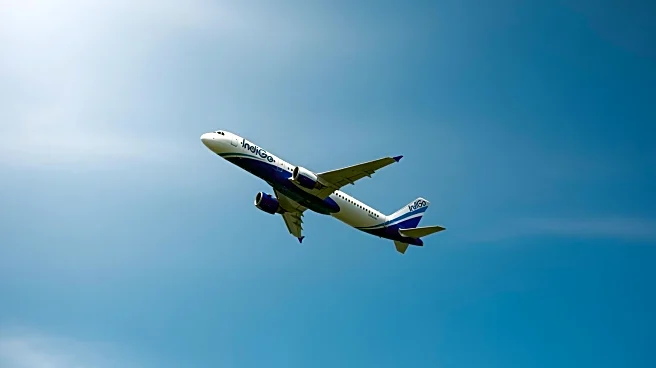What's Happening?
Singapore Airlines has launched its Boeing 737 MAX 8 business class service, offering enhanced comfort and amenities for regional flights. The airline, which previously operated only wide-body aircraft,
has integrated narrow-body planes into its fleet following the merger with its SilkAir subsidiary. The 737 MAX business class cabin features staggered seating configurations, including solo 'throne' seats, providing passengers with flat beds and a more intimate travel experience. The aircraft is equipped with the KrisWorld entertainment system and offers free Wi-Fi, ensuring passengers have access to a wide range of movies, TV shows, and live TV. The onboard dining experience includes a full lunch service with options like stir-fried prawns and ondeh ondeh cake, complemented by pre-departure drinks and warm towels.
Why It's Important?
The introduction of the 737 MAX business class by Singapore Airlines marks a significant shift in its operational strategy, allowing the airline to serve airports that cannot accommodate wide-body aircraft. This move enhances the airline's ability to offer premium services on shorter regional routes, potentially increasing its competitiveness in the Asian market. The integration of narrow-body planes into the mainline fleet provides passengers with a consistent experience across different flight types, which could lead to increased customer satisfaction and loyalty. Additionally, the availability of flat beds and high-quality entertainment on short flights sets a new standard for business class travel in the region.
What's Next?
Singapore Airlines is expected to continue expanding its use of the 737 MAX for regional routes, potentially increasing the number of destinations served by these aircraft. The airline may also explore further enhancements to its business class offerings, such as improved meal presentation and additional seating configurations. As the aviation industry evolves, Singapore Airlines' strategic use of narrow-body planes could influence other carriers to adopt similar practices, leading to broader changes in regional air travel standards.
Beyond the Headlines
The integration of narrow-body aircraft into Singapore Airlines' fleet raises questions about the future of regional air travel and the balance between comfort and efficiency. As airlines seek to optimize their operations, the use of smaller planes for short-haul flights could become more common, potentially impacting airport infrastructure and passenger expectations. The focus on providing a premium experience on shorter flights may also drive innovation in cabin design and onboard services, influencing industry trends and passenger preferences.











